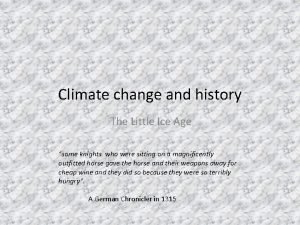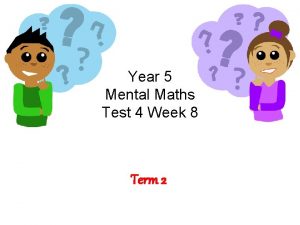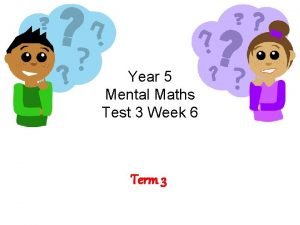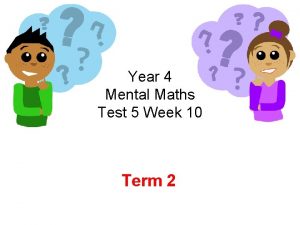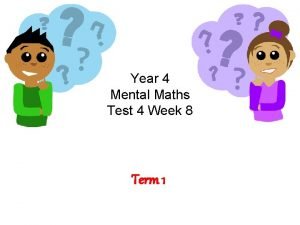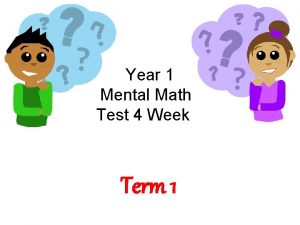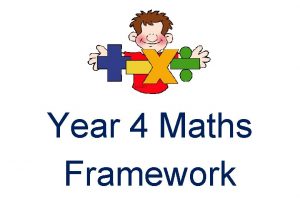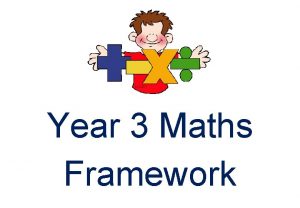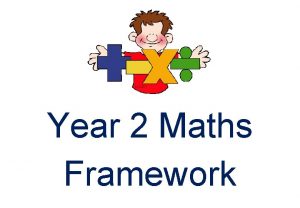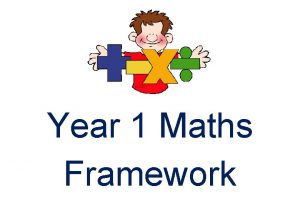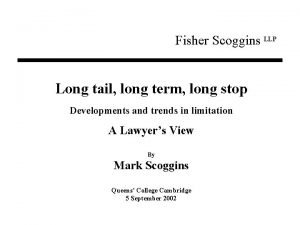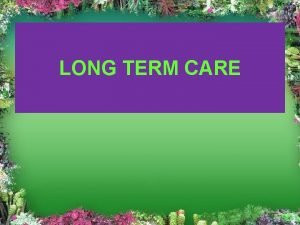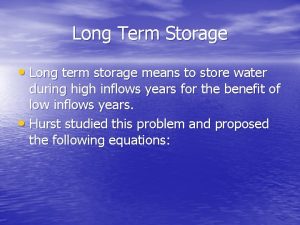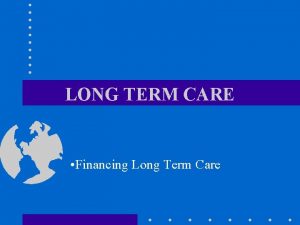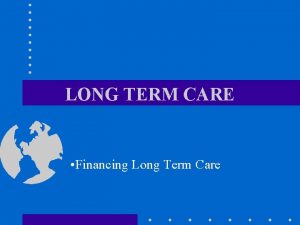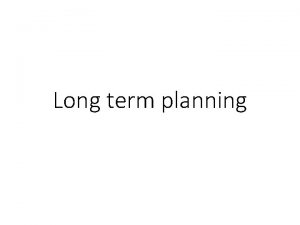Year 5 Maths Framework Long Term Overview Summer




















- Slides: 20

Year 5 Maths Framework

Long Term Overview Summer Term Calculation Addition and Subtraction Fractions, Decimals and Percentages Fractions Measurement Measures Week 5 Week 6 Week 7 Week 8 Week 9 Calculation Multiplication and Division Fractions, Decimals and Percentages Decimals Measurement Area and Perimeter *The long-term overview is based on the Maths No Problem Scheme of Work Measurement Volume Week 10 Calculation Word Problems Week 4 Week 11 Week 12 Statistics Graphs Geometry Properties of Shape Number and PV Roman Numerals Spring Term Week 3 Number and Place Value Numbers to 1 million Geometry Position and Direction Autumn Term Week 2 FDP Percentages Week 1 Review and Consolidation

Key Facts Termly overview These weekly objectives will be the focus of the fluency sessions which children participate in daily. They aim to increase the children’s recall of basic facts and skills in order to free up working memory for new learning. These facts will also form the basis for homework each week for the children to have repeated practice in different environments. Each of these areas can be practiced through games, songs, chanting, and competitions etc. as well as online (e. g. times table rockstars). Week 1 Autumn Term Week 2 Counting in powers of 10 Spring Term 11 and 12 times tables Summer Term Counting in tenths, hundredths and thousandths Week 3 Week 4 Adding single digit numbers within 20 Halving and doubling Finding tenths and quarters Week 5 Week 6 2, 5 and 10 times tables Week 7 Week 8 4 and 8 times tables Week 9 Week 10 Week 11 Week 12 3 and 6 times tables 7 and 9 times tables 2, 5 and 10 times table 4 and 8 times tables 3 and 6 times tables Multiplying and dividing by 10, 100 and 1000 Fraction equivalence Multiplying and dividing by 10, 100 and 1000 Rounding Halving and doubling

Autumn Term Overviews

Autumn Term Block 1 – Number and Place Value Numbers to 1 million Curriculum Objective Coverage read, write, order and compare numbers to at least 1 000 and determine the value of each digit � count forwards or backwards in steps of powers of 10 for any given number up to 1 000 � interpret negative numbers in context, count forwards and backwards with positive and negative whole numbers, including through zero � round any number up to 1 000 to the nearest 10, 1000, 10 000 and 100 000 � solve number problems and practical problems that involve all of the above Small Step Lesson Breakdown To read and represent numbers to 100, 000 Additional Planning Guidance Other planning support • NCETM Assessment of Mastery • White Rose Place Value Block To read and represent numbers to 1, 000 Use It! • What comes next? 646000 -10000= 636000; 636000 – To read and represent numbers to 1, 000 10000 = 626000; 626000 - 10000 = 616000 • Possible answers A number rounded to the nearest To compare numbers to 1, 000 thousand is 76000 What is the largest possible number it could be? Explain It! To compare numbers to 1, 000 • Do, then explain 747014, 774014, 747017, 774077, 744444. If you wrote these numbers in order starting with the smallest, which To compare number to 1, 000 using proportionality number would be third? Explain how you ordered the numbers. • Do, then explain. Show the value of the digit 5 in these To compare numbers to 1, 000 using number lines numbers? 350114, 567432, 985376. Explain how you know. and lists Evaluate It! To make and identify patters in number • Spot the mistake: 177000, 187000, 197000, 217000 What is wrong with this sequence of numbers? To make number patters using multiples of 10, 000 and • What do you notice? Round 343997 to the nearest 1000. 100, 000 Round it to the nearest 10000. What do you notice? Can you suggest other To round numbers to the nearest 10, 000 numbers like this? Prove It! To round numbers to the nearest 100, 000 • True or False? When I count in 10’s I will say the number 10100? Make up an example or Give further examples. Create six To round numbers to the nearest 100, 1, 000, 10, 000 and • 100, 000 digit numbers where the digit sum is five and the thousands digit is two. Eg 300200, 210200 What is the largest/smallest number? Consolidation lesson

Autumn Term Block 2 – Calculation Addition and Subtraction Curriculum Objective Coverage add and subtract whole numbers with more than 4 digits, including using formal written methods (columnar addition and subtraction) � add and subtract numbers mentally with increasingly large numbers � use rounding to check answers to calculations and determine, in the context of a problem, levels of accuracy � solve addition and subtraction multistep problems in contexts, deciding which operations and methods to use and why. Small Step Lesson Breakdown To add using counting on To subtract using counting backwards To add numbers within 1, 000 using rounding To add and subtract to solve comparison problems To add numbers within 1, 000 using column addition To subtract numbers within 1, 000 To subtract numbers using number bonds To refine addition skills To subtract numbers to 1, 000 To consolidate subtraction skills Additional Planning Guidance Use It! • Continue the pattern: 90 = 100 – 10; 80 = 100 – 20; Can you make up a similar pattern starting with the numbers 74, 26 and 100? • Missing numbers: 91 +__ = 100; 100 -__ = 89 What number goes in the missing box? • Fact families: Which four number sentences link these numbers? 100, 67, 33 • Missing symbols: Write the missing symbols (+ - =) in these number sentences: 80__20__100; 100__70__30; 87__13__100 Explain It! • What else do you know? If you know this: 87 = 100 – 13 What other facts do you know? How did you solve this? Evaluate It! • True or false? Are these number sentences true or false? 6. 17 + 0. 4 = 6. 57; 8. 12 – 0. 9 = 8. 3 Give your reasons. • Hard and easy questions: Which questions are easy / hard? 213323 - 70 =; 512893 + 300 =; 819354 - 500 =; 319954 + 100 = Explain why you think the hard questions are hard? • Making an estimate: Which of these number sentences have the answer that is between 0. 5 and 0. 6: 11. 74 11. 18; 33. 3 – 32. 71 Prove It! • Convince me: ____ + 1475 = 6_24 What numbers go in the boxes? What different answers are there? • Always, sometimes, never: Is it always, sometimes or never true that the sum of four even numbers is divisible by 4.

Autumn Term Block 3 – Calculation Multiplication and Division Curriculum Objective Coverage identify multiples and factors, including finding all factor pairs of a number, and common factors of two numbers � know and use the vocabulary of prime numbers, prime factors and composite (nonprime) numbers � establish whether a number up to 100 is prime and recall prime numbers up to 19 � multiply numbers up to 4 digits by a one- or two-digit number using a formal written method, including long multiplication for two-digit numbers � multiply and divide numbers mentally drawing upon known facts � divide numbers up to 4 digits by a one-digit number using the formal written method of short division and interpret remainders appropriately for the context � multiply and divide whole numbers and those involving decimals by 10, 100 and 1000 recognise and use square numbers and cube numbers, and the notation for squared (2) and cubed (3) � solve problems involving multiplication and division including using their knowledge of factors and multiples, squares and cubes solve problems involving addition, subtraction, multiplication and division and a combination of these, including understanding the meaning of the equals sign solve problems involving multiplication and division, including scaling by simple Small Step Lesson Breakdown To identify multiples To identify factors To find common factors To identify and name prime numbers To determine prime numbers up to 100 To find square and cube numbers To multiply by 10, 100 and 1, 000 To multiply a 2 or 3 -digit number and 1 -digit number Additional Planning Guidance Use It! • Missing numbers: 6 x 0. 9 = __ x 0. 03; 6 x 0. 04 = 0. 008 x ___ Which numbers could be written in the boxes? • Anchor Fact: 3 x 75 = 225 Use this fact to work out 450 ÷ 6 =; 225 ÷ 0. 6 = • Anchor Fact: To multiply by 25 you multiply by 100 and then divide by 4. Use this strategy to solve: 48 x 25; 78 x 25; 4. 6 x 25 • Use the inverse: Use the inverse to check if the following calculations are correct: 4321 x 12 = 51852; 507 ÷ 9 = 4563 To multiply a 4 -digit and 1 -digit number with regrouping ones, tens and hundreds To multiply 2, 2 -digit numbers with regrouping To multiply a 3 -digit and 2 -digit number using column method To divide by 10, 100 and 1, 000 To divide a 3 or 4 -digit number by a 1 -digit number To divide a 3 -digit number by a 1 -digit number leaving remainders Consolidation lesson Explain It! • Making links: 7 x 8 = 56 How can you use this fact to solve these calculations? 0. 7 x 0. 8 = 5. 6 ÷ 8 = Evaluate It! • Estimate: Apples weigh about 170 g each. How many apples would you expect to get in a 2 kg bag? • Size of an answer: The product of a two digit and three digit number is approximately 6500. What could the numbers be? Prove It! • Prove It What goes in the missing box? 12_3 ÷ 6 = 212; 12_3 ÷ 7 = 212; 22_3 ÷ 7 = 321 r 6; 323 x_1 = 13243 • Always, sometimes, never? o Is it always, sometimes or never true that multiplying a number always makes it bigger?

Autumn Term Block 4 – Calculation Word Problems Curriculum Objective Coverage solve problems involving multiplication and division including using their knowledge of factors and multiples, squares and cubes � solve problems involving addition, subtraction, multiplication and division and a combination of these, including understanding the meaning of the equals sign solve problems involving multiplication and division, including scaling by simple fractions and problems involving simple rates. Small Step Lesson Breakdown To solve word problems involving multiple operations To solve word problems using multiplication and division To solve word problems using multiple operations using bar model diagrams Consolidation lesson Additional Planning Guidance

Autumn Term Block 5 – Statistics Graphs Curriculum Objective Coverage solve comparison, sum and difference problems using information presented in a line graph � complete, read and interpret information in tables, including timetables. Small Step Lesson Breakdown To read the information in a table To read and respond to information in a table To interpret tables with a variety of data To read and interpret single line graphs To read and interpret line graphs with multiple lines Additional Planning Guidance Use It • Make up your own ‘true/false’ statement about a journey using the timetable. Explain It • Top Tips: Explain how you would interpret the timetable. Evaluate It • True or false? (Looking at a train time table) “If I want to get to Exeter by 4 o’clock this afternoon, I will need to get to Taunton station before midday”. • What’s the same, what’s different? Pupils identify similarities and differences between different representations and explain them to each other To read and interpret line graphs with multiple lines To convert data from a table onto a line graph Consolidation lesson Prove It • The 4: 05 bus takes longer to reach Torquay than the 5: 25 bus. Prove your answer. • True or false? (Looking at a train time table) “If I want to get to Exeter by 4 o’clock this afternoon, I will need to get to Taunton station before midday”. Is this true or false? • Make up your own ‘true/false’ statement about a journey using the timetable.

Spring Term Overviews

Spring Term Block 1 – Fractions, Decimals and Percentages Fractions Curriculum Objective Coverage compare and order fractions whose denominators are all multiples of the same number � identify, name and write equivalent fractions of a given fraction, represented visually, including tenths and hundredths recognise mixed numbers and improper fractions and convert from one form to the other and write mathematical statements > 1 as a mixed number add and subtract fractions with the same denominator and denominators that are multiples of the same number � multiply proper fractions and mixed numbers by whole numbers, supported by materials and diagrams Small Step Lesson Breakdown To divide to make fractions To write improper fractions and mixed numbers To find equivalent fractions To compare and order improper fractions To compare and order mixed numbers To make number pairs with mixed denominators To add fractions by finding common denominators To add fractions with a sum greater than 1 To add fractions which create improper fraction sums To subtract fractions with different denominators To subtract fractions and mixed numbers To multiply fractions by whole numbers where the product is an improper fraction To multiply mixed numbers by whole numbers Consolidation lesson Additional Planning Guidance Use It! • Another and another Write a fraction with a denominator of one hundred which has a value of more than 0. 75? … and another, … • Missing symbol. Put the correct symbol < or > in each box. 4. 627__4. 06; 12. 317__12. 31 • What needs to be added to 3/4 to give 7/8? • Give an example of a fraction that is more than three quarters. Now another example that no one else will think of. Explain how you know the fraction is more than three quarters. Explain It! • Do, then explain. • Top tips. Explain how to round decimal numbers to one decimal place? Also see rounding in place value Evaluate It! • Odd one out. Which is the odd one out in each of these collections of 4 fractions 6/10, 3/5, 18/20, 9/15; 30/100, 3/10, 6/20, 3/9 Why? • What do you notice? Find 30/100 of 200. Find 3/10 of 200. Can you write any other similar statements? • Imran put these fractions in order starting with the smallest. Are they in the correct order? Two fifths, three tenths, four twentieths. How do you know? • Spot the mistake 0. 088, 0. 089, 1. 0 Prove It! • The answer is 1 2/5 , what is the question • True or false? • What comes next? 1. 173, 1. 183, 1. 193 • Continue the pattern for the next five number sentences. (Adding fractions) Explain how you know.

Spring Term Block 2 – Fractions, Decimals and Percentages Decimals Curriculum Objective Coverage read and write decimal numbers as fractions [for example, 0. 71 = 100 71 ] � recognise and use thousandths and relate them to tenths, hundredths and decimal equivalents � round decimals with two decimal places to the nearest whole number and to one decimal place � read, write, order and compare numbers with up to three decimal places � solve problems involving number up to three decimal places � solve problems which require knowing percentage and decimal equivalents of ½, ¼, 2/5, 4/5 and those fractions with a denominator of a Small Step Lesson Breakdown To write decimals To read and write decimals To compare tenths and hundredths To order and compare decimals To compare and order decimals To write fractions as decimals To add and subtract decimals in pounds and pence To add and subtract amounts in pounds and pence To add and subtract decimals To add pairs of numbers to make 1 To add and subtract the perimeter of an object using decimals To round decimals to the nearest whole number Additional Planning Guidance Use It! • Ordering. Put these numbers in the correct order, starting with the largest. 7/10, 0. 73, 7/100, 0. 073 71% Explain your thinking • Another and another Write a fraction with a denominator of one hundred which has a value of more than 0. 75? … and another, … • Missing symbol. Put the correct symbol < or > in each box. 4. 627__4. 06; 12. 317__12. 31 • What needs to be added to 3. 63 to give 3. 13? What needs to be subtracted from 4. 652 to give 4. 1? • Give an example of a decimal that is more than three quarters. Now another example that no one else will think of. Explain how you know the fraction is more than three quarters. Explain It! • Do, then explain. Circle each decimal which when rounded to one decimal place is 6. 2. . 6. 32 6. 23 6. 27 6. 17 Explain your reasoning • Top tips. Explain how to round decimal numbers to one decimal place? Also see rounding in place value Evaluate It! • What do you notice? One tenth of £ 41 One hundredth of £ 41 One thousandth of £ 41 Continue the pattern • Spot the mistake 0. 088, 0. 089, 1. 0 Consolidation lesson Consolidation lesson Prove It! • The answer is… , what is the question • True or false? 0. 1 of a kilometre is 1 m. 0. 2 of 2 kilometres is 2 m. 0. 3 of 3 Kilometres is 3 m. 0. 25 of 3 m is 500 cm. 2/5 of £ 2 is 20 p • What comes next? 1. 173, 1. 183, 1. 193 • 0. 085 + 0. 015 = 0. 1 0. 075 + 0. 025 = 0. 1 0. 065 + 0. 035 = 0. 1 Continue the pattern for the next five number sentences. Explain how you know.

Spring Term Block 3 – Fractions, Decimals and Percentages Curriculum Objective Coverage recognise the per cent symbol (%) and understand that per cent relates to ‘number of parts per hundred’, and write percentages as a fraction with denominator 100, and as a decimal � solve problems which require knowing percentage and decimal equivalents of ½, ¼, 2/5, 4/5 and those fractions with a denominator of a multiple of 10 or 25. Small Step Lesson Breakdown To compare quantities To convert amounts into percentages To convert fractions into percentages Consolidation lesson Additional Planning Guidance Use It • Which is more: 20% of 200 or 25% of 180? Explain your reasoning.

Spring Term Block 4 – Geometry Properties of Shapes Curriculum Objective Coverage identify 3 -D shapes, including cubes and other cuboids, from 2 -D representations � know angles are measured in degrees: estimate and compare acute, obtuse and reflex angles � draw given angles, and measure them in degrees (o) � identify: angles at a point and one whole turn (total 360 o) � angles at a point on a straight line and 1/2 a turn (total 180 o) � other multiples of 90 o � use the properties of rectangles to deduce related facts and find missing lengths and angles � distinguish between regular and irregular polygons based on reasoning about equal sides and angles. Small Step Lesson Breakdown To identify types of angles To measure angles To draw and measure angles To measure angles on a straight line To investigate angles that make 360 degrees To draw angles using a protractor To draw lines accurately To describe squares and rectangles To investigation quadrilaterals To solve problems involving angles in rectangles To solve problems involving angles To use our understanding to solve angle problems To investigate regular polygons Consolidation lesson Additional Planning Guidance Prove It! • What is the angle between the hands of a clock at four o clock? At what other times is the angle between the hands the same? • Always, sometimes, never. Is it always, sometimes or never true that the number of lines of reflective symmetry in a regular polygon is equal to the number of its sides n. • Other possibilities. A rectangular field has a perimeter between 14 and 20 metres. What could its dimensions be? • Other possibilities Here is one angle of an isosceles triangle. You will need to measure the angle accurately. What could the other angles of the triangle be? Are there any other possibilities? Evaluate It! • What’s the same, what’s different? What is the same and what is different about the net of a cube and the net of a cuboid? Use It! • Visualising I look at a large cube which is made up of smaller cubes. If the larger cube is made up of between 50 and 200 smaller cubes what might it look like?

Summer Term Overviews

Summer Term Block 1 – Geometry Position and Direction Curriculum Objective Coverage identify, describe and represent the position of a shape following a reflection or translation, using the appropriate language, and know that the shape has not changed. Small Step Lesson Breakdown To name and plot points To describe translations To describe movements and reflections To describe movements of 2 -D shapes To reflect a shape more than once Additional Planning Guidance Use It • Working backwards. A square is translated 3 squares down and one square to the right. Three of the coordinates of the translated square are: (3, 6) (8, 11) (8, 6) What are the co-ordinates of the original square?

Summer Term Block 2 – Measurements Measures Curriculum Objective Coverage convert between different units of metric measure (for example, kilometre and metre; centimetre and millimetre; gram and kilogram; litre and millilitre) � understand use approximate equivalences between metric units and common imperial units such as inches, pounds and pints solve problems involving converting between units of time � use all four operations to solve problems involving measure [for example, length, mass, volume, money] using decimal notation, including scaling. Small Step Lesson Breakdown To convert units of length To solve problems using units of length To convert units of mass including kg and pounds To convert units of time To convert days, weeks and months To convert units of time To solve problems using units of time To read the temperature Consolidation lesson Additional Planning Guidance Use It! • Undoing. A school play ends at 6. 45 pm. The play lasted 2 hours and 35 minutes. What time did it start? Evaluate It! • What do you notice? 1 minute = 60 seconds 60 minutes = seconds. Fill in the missing number of seconds down some more time facts like this. • Working backwards. Put these lengths of time in order starting with the longest time. 105 minutes 1 hour 51 minutes 6360 seconds • Write more statements. Mr Smith needs to fill buckets of water. A large bucket holds 6 litres and a small bucket holds 4 litres. If a jug holds 250 ml and a bottle holds 500 ml suggest some ways of using the jug and bottle to fill the buckets. Explain It! • Top Tips. Put these amounts in order starting with the largest. 130000 cm 2 1. 2 m 2 13 m 2 Explain your thinking Prove It! • The answer is …. 0. 3 km What is the question? • Always, sometimes, never. When you cut off a piece of a shape you reduce its area and perimeter. • Testing conditions. Shape A is a rectangle that is 4 m long and 3 m wide. Shape B is a square with sides 3 m. The rectangles and squares are put together side by side to make a path which has perimeter between 20 and 30 m. Can you draw some other arrangements where the perimeter is between 20 and 30 metres? • Other possibilities A cuboid is made up of 36 smaller cubes. If the cuboid has the length of two of its sides the same what could the dimensions be?

Summer Term Block 3 – Measurement Area and Perimeter Curriculum Objective Small Step Coverage Lesson Breakdown To find the perimeter of shapes measure and calculate the To find shapes with a specific perimeter of composite rectilinear To find the perimeter of different shapes in centimetres and To use scale diagrams to find perimeter metres � calculate and To measure area by counting compare the area of rectangles (including To measure are of squares), and including using To measure area of a shape standard units, square centimetres To measure area in square metres (cm 2) and square metres (m 2) and To find the are of shapes in square metres estimate the area of irregular shapes � To estimate area in kilometres use all four Consolidation lesson operations to solve problems involving Consolidation lesson measure [for example, length, Consolidation lesson mass, volume, money] using Consolidation lesson decimal notation, including scaling. Consolidation lesson Additional Planning Guidance Use It! • Undoing. A school play ends at 6. 45 pm. The play lasted 2 hours and 35 minutes. What time did it start? Evaluate It! • What do you notice? 1 minute = 60 seconds 60 minutes = seconds. Fill in the missing number of seconds down some more time facts like this. • Working backwards. Put these lengths of time in order starting with the longest time. 105 minutes 1 hour 51 minutes 6360 seconds • Write more statements. Mr Smith needs to fill buckets of water. A large bucket holds 6 litres and a small bucket holds 4 litres. If a jug holds 250 ml and a bottle holds 500 ml suggest some ways of using the jug and bottle to fill the buckets. Explain It! • Top Tips. Put these amounts in order starting with the largest. 130000 cm 2 1. 2 m 2 13 m 2 Explain your thinking Prove It! • The answer is …. 0. 3 km What is the question? • Always, sometimes, never. When you cut off a piece of a shape you reduce its area and perimeter. • Testing conditions. Shape A is a rectangle that is 4 m long and 3 m wide. Shape B is a square with sides 3 m. The rectangles and squares are put together side by side to make a path which has perimeter between 20 and 30 m. Can you draw some other arrangements where the perimeter is between 20 and 30 metres? • Other possibilities A cuboid is made up of 36 smaller cubes. If the cuboid has the length of two of its sides the same what could the dimensions be?

Summer Term Block 4 – Measurement Volume Curriculum Objective Small Step Coverage Lesson Breakdown estimate volume [for To understand the term volume example, using 1 cm 3 blocks to build To find the volume of 3 -D shapes cuboids (including cubes)] and capacity [for example, using To find the volume of solids water] � use all four operations to solve To find the capacity of cuboids problems involving measure [for example, length, To find the capacity of rectangular boxes mass, volume, money] using decimal notation, To compare units of volume including scaling. To convert units of volume (metric and imperial) To solve word problems involving volume Additional Planning Guidance Use It! • Undoing. A school play ends at 6. 45 pm. The play lasted 2 hours and 35 minutes. What time did it start? Evaluate It! • What do you notice? 1 minute = 60 seconds 60 minutes = seconds. Fill in the missing number of seconds down some more time facts like this. • Working backwards. Put these lengths of time in order starting with the longest time. 105 minutes 1 hour 51 minutes 6360 seconds • Write more statements. Mr Smith needs to fill buckets of water. A large bucket holds 6 litres and a small bucket holds 4 litres. If a jug holds 250 ml and a bottle holds 500 ml suggest some ways of using the jug and bottle to fill the buckets. Explain It! • Top Tips. Put these amounts in order starting with the largest. 130000 cm 2 1. 2 m 2 13 m 2 Explain your thinking Prove It! • The answer is …. 0. 3 km What is the question? • Always, sometimes, never. When you cut off a piece of a shape you reduce its area and perimeter. • Testing conditions. Shape A is a rectangle that is 4 m long and 3 m wide. Shape B is a square with sides 3 m. The rectangles and squares are put together side by side to make a path which has perimeter between 20 and 30 m. Can you draw some other arrangements where the perimeter is between 20 and 30 metres? • Other possibilities A cuboid is made up of 36 smaller cubes. If the cuboid has the length of two of its sides the same what could the dimensions be?

Summer Term Block 5 – Number and Place Value Roman Numerals Curriculum Objective Small Step Coverage Lesson Breakdown read Roman To write Roman numerals to 1000 (M) and recognise years written in Roman numerals To write numbers in their thousands in Roman numerals Consolidation lesson Additional Planning Guidance
 Short, medium and long term planning in education
Short, medium and long term planning in education Long term memory vs short term memory
Long term memory vs short term memory Short term and long term human resource planning
Short term and long term human resource planning Difference between long term and short term liabilities
Difference between long term and short term liabilities Long term liabilities
Long term liabilities Short term goal
Short term goal Short-term financial management
Short-term financial management Long and short
Long and short Once upon a time, there
Once upon a time, there Spring framework overview
Spring framework overview Early years learning framework overview
Early years learning framework overview Nist cybersecurity framework overview
Nist cybersecurity framework overview Last year summer
Last year summer Undaf
Undaf Poem on summer season
Poem on summer season Mental maths year 5
Mental maths year 5 Mental maths year 5 with answers
Mental maths year 5 with answers Year 4 mental maths test
Year 4 mental maths test Year 4 mental maths test
Year 4 mental maths test Year 3 mental maths test
Year 3 mental maths test Wigan mental maths year 1
Wigan mental maths year 1













